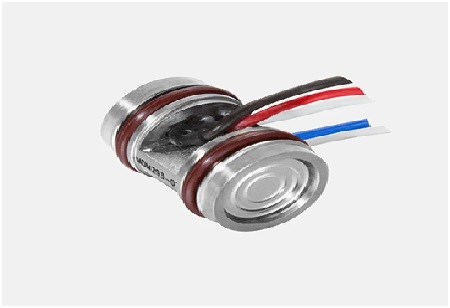What is differential pressure?
To understand better what differential pressure sensors are, let us first define differential pressure. Differential pressure is the pressure between two points in either gasses or fluids. This pressure is what we measure using the differential pressure sensor.
What is a differential pressure sensor?
A differential pressure sensor is a device used to measure the difference in pressure between two points in a fluid system. Companies use them to measure flow rate, differential, and absolute pressure. The differential pressure sensor consists of two sensors connected by a small tube. One of the sensors is called the upstream sensor, and the other is called the downstream sensor. The differential pressure sensor measures the differential pressure between these two points.
There are many different
types of differential pressure sensors available on the market. The type of sensor you choose will depend on the application in which it will be used. For example, some sensors are designed for high-pressure applications, while others are better suited for low-pressure applications.
Once you have selected the proper sensor for your application, you will need to install it. Differential pressure sensors are typically installed in inline or tee configurations. In an inline configuration, the sensor is installed in the line between two pressure points. In a tee configuration, the sensor is installed in a tee fitting that allows pressure to be measured at two different points.
How do you install a differential pressure sensor?
Differential pressure sensors are typically installed using threaded fittings. First, determine the correct orientation for the sensor in your system to install the sensor. Once you have determined the correct
orientation, thread the sensor into the fitting until it is tight. Next, connect the pressure lines to the ports on the sensor. Make sure that all connections are secure and free of leaks. Finally, power up the sensor and calibrate it according to the manufacturer's instructions.
If you are having trouble installing your differential pressure sensor, you can try a few things. First, check the manufacturer's website for installation instructions or troubleshooting tips. Contact customer support for assistance if you still cannot get the sensor to work properly.
Installing a differential pressure sensor is a relatively simple process. By following the steps outlined in this blog post, you should be able to do it yourself with no problems. However, if you still encounter any difficulties, don't hesitate to contact customer support for assistance.
Advantages of differential pressure sensors
Differential pressure sensors are an attractive option for many applications due to their wide range of advantages. They are very versatile and can be used in a variety of settings. They are also very accurate, which is important in many industries. Additionally, differential pressure sensors are relatively low cost and easy to install, making them a great option for many applications.
Differential pressure sensors also have several other advantages, such as being able to withstand high temperatures, being resistant to shock and vibration, and having a long-life span. These advantages make it an essential part of many industries.
Disadvantages of differential pressure sensors
Companies can get accurate readings of pressure differences in various applications using these sensors. However, like with all things, there are disadvantages to using differential pressure sensors.
One of the disadvantages of using differential pressure sensors is that they can be affected by outside factors. For example, if there is a change in atmospheric pressure, this can cause the sensor to give an inaccurate reading. Additionally, if there is a lot of dust or other particles in the air, this can also affect the sensor. As a result,businesses need to consider these outside factors when using differential pressure sensors.
Another disadvantage of using differential pressure sensors is that they can be expensive. While the initial cost of the sensor may not be too high, businesses need to factor in the cost of installation and maintenance. Additionally, the costs can add up quickly if a business needs to use multiple sensors. As a result, businesses need to weigh the costs and benefits of using differential pressure sensors before deciding.
In conclusion, differential pressure sensors are an important part of many industrial and commercial applications, and they should all strive to have them as part of their system.
